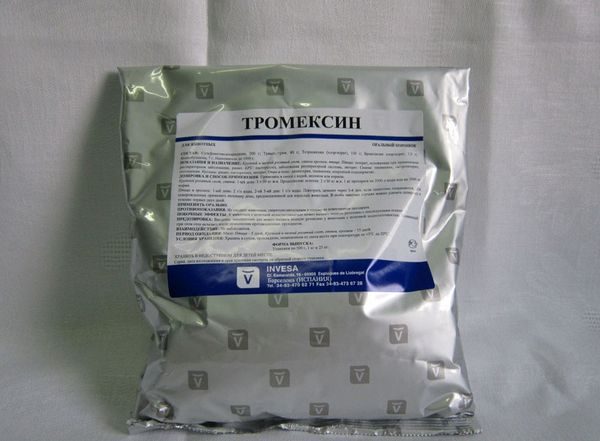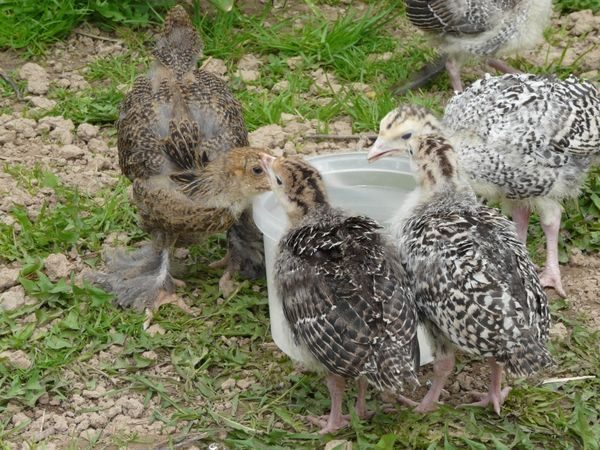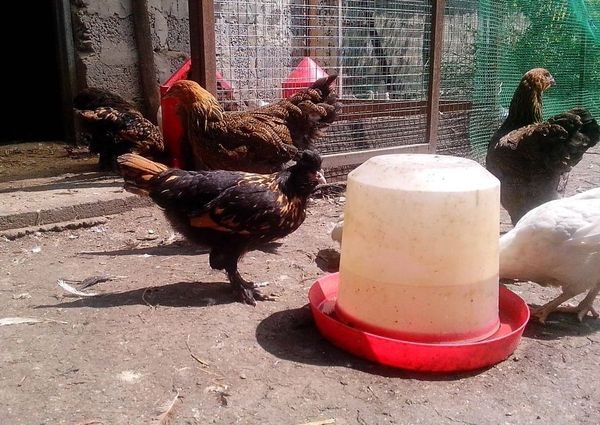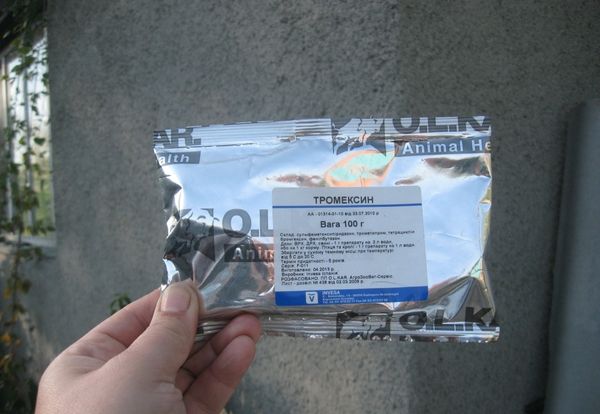There are several ways of breeding poultry. You can put suitable fertilized eggs under the hen, you can buy chicks that were bred through an incubator. Regardless of the breeding method, each farmer strives to maximize the conservation of the poultry population.
In addition to good care and the right choice of food for young animals, rational use of drugs, in particular, helps to achieve high results.
Poultry may be subject to a variety of diseases. For the prevention and treatment of great thromexin.
Table of contents
Application area
The preparation of a broad antimicrobial orientation is used not only for domestic birds, but also for larger farm animals.
As for poultry, the drug is used to treat, as well as prevention of the following diseases:
- Enteritis bacterial nature.
- Salmonellosis.
- Colibacteriosis
- Mixed infections and viral infections with bacterial complications.
- Pasterelosis.
- Diseases respiratory ways, etc.
- Diarrhea.
The factors causing diarrhea of chicks are many. Diarrhea in chicks may occur on the background of nervous stress associated with fright or adaptation to the conditions in the new place of residence.
It happens that such a state may occur as a result of feeding the birds with poor-quality feed of the first freshness. However, diarrhea can indicate serious diseases that can lead to deaths. Pullorez, or typhoid fever, is characterized by liquid white, green or brown stools.
Untreated, it is fatal. Coccidiosis is diagnosed by the presence of bloody loose stools. When pasteurellosis or bird cholera is different, it is characterized by the presence of green diarrhea with blood patches. In cases of salmonellosis, birds suffer from fluid frothy diarrhea.
It is to prevent the incidence, as well as for the treatment of infectious pathologies, the drug thromexin is effectively used.
The composition of the drug
Tromeksin –antibiotic with a wide range of antimicrobial properties. One gram of the drug contains 200 mg of sulfamethoxypyridazine, 40 mg of trimethoprim, 110 mg of tetracycline hydrochloride and 130 mg of bromhexine hydrochloride.

Of the excipients in the composition include:
- sodium cyclamate.
- sodium saccharinate.
- sodium citrate.
- anhydrous calloidal silicon.
- sodium chloride.
- lactose monohydrate.
- oxytop-PB.
- pequaroma 1226-z.
The drug is contraindicated for use in birds with increased sensitivity or intolerance to any component of the drug.
Due to the ability of the components of the drug to accumulate in the eggs, this drug is contraindicated for the prevention of the incidence of laying birds. If necessary, the use of drugs for medicinal purposes, eggs from birds treated with the antibiotic are considered unsuitable for use.
Release form
The drug is available in the form of a light yellow powder, packaged in waterproof foil bags of 0.5 and 1 kg capacity, as well as in bags with a capacity of 5 and 25 kg.
The package must have a Russian-language labeling indicating the name of the organization of the manufacturer, the name of the drug, the full composition of the medicinal product, methods of use, date of issue and serial number.
Also on the package must be an inscription indicating that the area of use of the drug - veterinary medicine.
Instructions for use for young

It is advisable to use drugs and vitamin complexes in chicks in the first days of life. As measures to prevent infectious diseases of young poultry, farmers carry out a number of activities.
These include the observance of sanitary and hygienic norms and the feeding of chicks with antimicrobial drugs.
However, even with the observance of sanitary standards and the availability of drug supplementation, the incidence of poultry may be observed. For the treatment of domestic birds from a number of ailments used tromeksin. Sick chicks are given water with diluted tromexin powder for 3-5 days.
If symptoms persist, repeat the treatment after 3-4 days. For young poultry, thromexin is diluted at a rate of 2 g per 1 liter of water on the first day and 1 g per liter of water on subsequent days. At observance of the recommended dosage, good tolerability of the drug is observed.
Tromeksin for chickens
To prevent the incidence of livestock poultry, chickens are recommended to drink antimicrobial drugs. For these purposes, you can use tromeksin. 0.5 g of the drug diluted in a liter of boiled chilled water and give to chickens on the 5th day.
Preventive feeding is carried out within 3-5 days. Three weeks later, the antibiotic is re-fed with an active substance other than tromexin.
The use of medicine for goslings
Goslings in the first days of life require increased attention and care. Like birds of other breeds, young geese are most susceptible to various infectious diseases. One of the preventive measures is the early feeding of therapeutic agents with antimicrobial properties.
Tromexin is used in goslings according to the standard scheme applicable to chickens. The universal remedy is used in veterinary medicine to treat and counteract the incidence of all varieties of agricultural birds, including waterfowl, such as geese and ducks.
The issuance of the drug for turkey poults

The prophylactic regimen for turkey poults does not differ from the prophylactic regimens used for other types of poultry.
When using Thromaksin for chicks older than three weeks, the drug is diluted at the rate of 1 g per liter of liquid as for adult birds, when it comes to preventive feeding.If the medicine is used directly for treatment, on the first day, the dose of powder is doubled.
Important: the shelf life of the diluted solution of thromexin should not be more than 24 hours. During the course of treatment, a fresh solution is poured into the drinking bowl every day, the remnants of the old are disposed of.
The use of antibiotic solution for adult birds
It is advisable to use an adult bird with a solution of antibiotics twice as richer than a solution used for the young of the first days of life for an adult bird. When using antibiotics, including tromexin, you should consider the timing of removal of the drug from the body.

Meat and eggs of poultry that received a course of treatment or prevention of the drug tromeksin can not be used for 5-14 days, respectively, slaughter is not earlier than after the fifth day after taking the medicine.
Side effects for broilers
There is a good tolerability of this drug, subject to the dosage of the drug. With an overdose, symptoms of anemia of the mucous membranes, disorders of the gastrointestinal tract, impaired renal function may occur.
In the presence of renal failure may cause fluid retention in the tissues, increased swelling.
Pharmacological characteristics
Sulfamethoxypyridazine and trimethoprim, the main active ingredients of thromexin, are highly effective against a number of pathogenic microorganisms due to the suppression of the synthesis of tetrahydrofolic acid in a bacterial cell.
Tetracycline in the composition of the drug violates the protein biosynthesis of harmful bacteria. Bromhexine has a pronounced mucolytic effect, helps to relieve airway edema, enhances oxygen saturation of the body by improving respiratory ventilation.
The maximum level of concentration in the blood is observed 8 hours after oral administration. Excreted mainly in the urine, to a lesser extent with bile.
Precautionary measures
When using tromexin, certain safety rules should be followed.associated with the use of veterinary drugs:
- The whole complex of work with the drug must be carried out using personal protective equipmentsuch as workwear, gloves, goggles and a respirator.

Respirator and gloves - While using tromexin no smoking, take a drink or food.
- After completion of the work associated with the drug must be thoroughly washed. skin of the face and hands with soap.
- The container used for breeding tromexin is prohibited for further use in household needs and must be recycled.
Antibiotic therapy has its supporters and its opponents.
It is worth noting that, subject to the instructions and rules for the use of medicinal products for chickens, including the scope, dosage, contraindications, precautions and breeding period, negative consequences both for feathered pets and for people who eat meat and eggs of domestic birds can be avoided.
Failure to use antibiotics for broilers is fraught with a number of consequences.starting from losses associated with the loss of livestock, ending with the potential danger of contracting dangerous infectious diseases such as, for example, salmonellosis, which is easily transmitted to humans.
